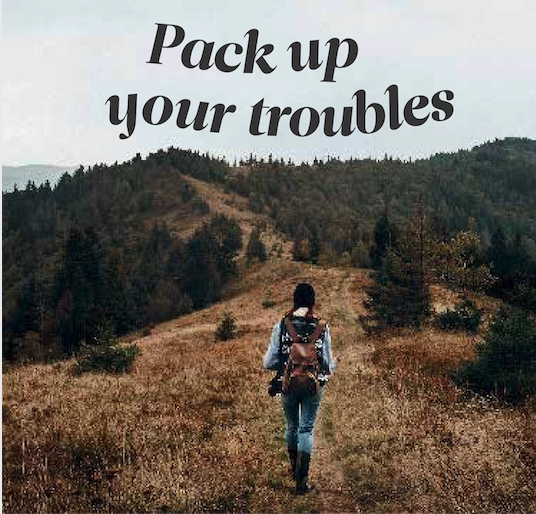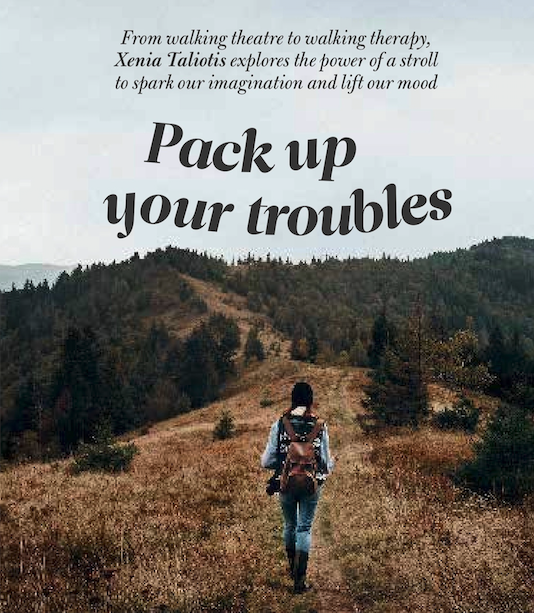Written by Lara Just – June 2019…

It’s been a busy summer month so far and it seemed fitting to write about how to manage some of the symptoms of stress, including low mood and energy. A good friend of mine is running some burnout retreats at the end of this month and clients are eligible to receive a fantastic discount. Also, we will look at how “Nature” can become a healing element.
We probably all know that prolonged stress isn’t good for us. It can lead to burnout, anxiety, depression, insomnia, fatigue and many other symptoms. “Stress” doesn’t just mean having a lot to do or being too busy to see friends or go on holidays. Although yes, a long-term imbalance between work and play can create burnout symptoms.
However, stress is also created by continuously doing things we deep down don’t like or don’t really want to do – but feel we have to, or feel we have no choice or power to change them. It could be doing jobs we hate, being stuck in a negative relationship, dealing with toxic family members, being unhappy with the boss or co-workers, or our home or the environment we live in.
Many people also report feeling more stressed (mentally, physically, emotionally and in overall health) in the fast paced crowded urban environments in our cities.
The disappointing truth is that none of these things will likely change until we are ready to change them. And most of the time the impetus to change has to come from ourselves. But to find the power within to recognise this and to then take charge to make changes is often frightening or seems even impossible at first.
And for most people to be able to do this successfully and sustainably, we need to do something else first…

To be able to actually do any of these things, to look after ourselves (self-care), and to make changes, we have to first recognise it as a problem.
The second step then is to figure out what to do about it. The third step is to figure out how to do it! Of course this seems like a logical approach and it is easier said than done. So what stops us?
The second step is actually the hardest for most people. To start making any changes successfully and sustainably, we need to understand a little more about ourselves. Those stubborn parts of ourselves, that make us stay in our old ways of thinking and doing things. We may have an idea of what to do about our situation or perhaps rather what we ‘should’ be doing about it (i.e. what other people might think we should do about it). But that’s the point that becomes a real issue here. It may not really be what we want to do, even if our logical rational mind tells us so. Despite the fact that we may know what it is we don’t want, we may not be fully clear yet on what it is we do want!
The second step requires some personal re-evaluation.
Who am I…really?
What is it that I really want in life?
What drives me?
What makes me feel good…anything?
But understanding our true underlying needs and wants, doesn’t tend to happen with just a snap of our fingers. It tends to need some space and timeto allow us to even start reflecting and exploring this a bit more fully. It requires some ‘grounding’ and state management first.
Physical movement can help us with this and to be in our bodies more mindfully – more in a state of ‘being’ rather than focussing on ‘doing’ something all the time.
For example, moving in nature can create a renewed sense of mindful ‘presence’. By noticing and observing our bodies and physical surroundings more (= being ‘mindful’ not ‘mind full’), space can be created for our thoughts to flow more freely. Only a relaxed mind can come up with new ways of thinking, perspectives, different ideas and creative solutions.
Some questions you may ask yourself around the theme of prolonged stress:
- What are currently three things in your work that stress you out?
- What stresses you about your current relationship or life in general?
- Do you frequently fell exhausted, drained, low in mood, get angry quickly, have difficulties sleeping or experience lack of energy?
I like to use nature-based approaches in the therapy work I offer to clients to encourage this type of ‘creative nurturing’. There are other ways of re-connecting with nature, ourselves and others and I hope this newsletter can give you some useful ideas on how to approach it.
Apart from the walking therapy that I offer, there will be some workshops planned for later this year on ‘mindful gardening’ and ‘gardening therapy’ in North London.
If you have any questions about walking therapy or any future workshops, please contact me.
Recent Media Publication
In this latest article by Xenia Taliotis published in the Calm Moment Magazine, the The Walking Therapist was mentioned amongst other outdoor approaches. Read the full article here to find out why walking therapy can lift our mood and spark our imagination!
For other published media articles, see also in the resources section of this website.
